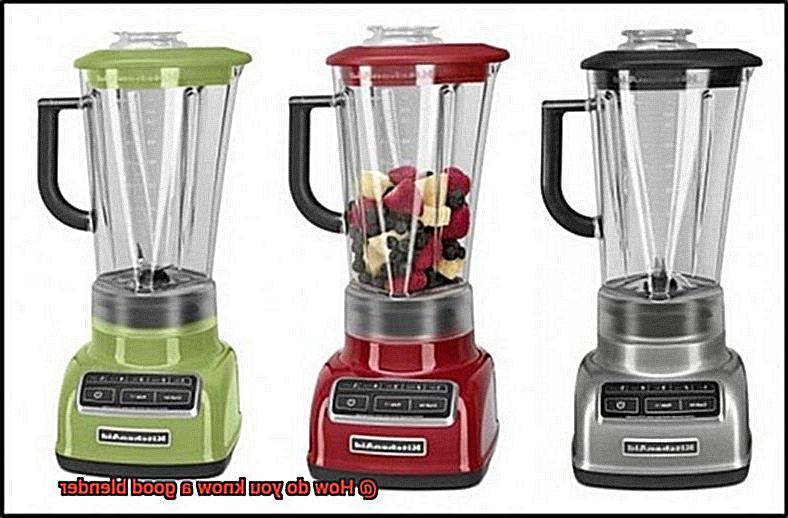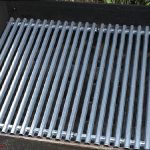Are you tired of lumpy smoothies and soups that just don’t cut it? Are you ready to upgrade your blender game? Look no further, because we’re about to dive deep into the world of blenders and show you how to spot a good one.
First things first, a good blender needs a powerful motor that can handle tough ingredients like ice and frozen fruits. Say goodbye to those annoying chunks in your smoothie. And let’s not forget about durability – a sturdy design is key for preventing accidents during blending and ensuring longevity.
But power isn’t everything. A good blender should also have multiple speed settings and blending options so that you can cater to different recipes and preferences. And nobody wants a loud breakfast smoothie, so noise levels are definitely something to consider.
Last but not least, cleaning should be a breeze. Who wants to spend hours scrubbing crevices and parts after a quick blend?
Whether you’re all about the smoothies or can’t get enough soup, a good blender is an essential kitchen tool. Stick with us as we break down the components of a top-notch blender and give you some recommendations for the best appliances on the market.
Contents
What is a Blender?
Blenders are the jack-of-all-trades of the kitchen, capable of blending, pureeing, and crushing ingredients to perfection. At their core, blenders consist of a motorized base with a blade assembly at the bottom of a container or jar, which can be made of plastic, glass, or stainless steel. With different sizes and shapes to suit varying needs, blenders have become an essential tool in any kitchen.
Personal blenders are compact and designed for single-serving use, while countertop blenders are larger and more powerful, making them suitable for families or people who enjoy entertaining. Immersion blenders are handheld devices that can be submerged in ingredients to blend them directly in a pot or bowl. No matter which type you choose, a blender can be used for making smoothies, soups, sauces, dips, nut butter, and even cocktails.
A blender’s versatility is made possible by its different speeds and settings that allow users to achieve different textures and consistencies. Some blenders have additional features such as pre-programmed settings, pulse functions, and auto shut-off mechanisms that make them even more convenient.
So how do you determine if a blender is of good quality? Here are some factors to consider:
Motor Power
The motor power is perhaps the most critical factor to consider when choosing a blender. A strong motor can easily blend tough ingredients such as ice, frozen fruits, and nuts. Ideally, a blender should have a motor power of at least 500 watts. However, if you’re looking for a high-performance blender that can handle even the toughest ingredients, consider investing in one with a motor power of 1000 watts or more.
Blade Quality
The blade assembly is another crucial component of a blender. Blenders with sharp blades made of durable materials such as stainless steel can easily blend ingredients without leaving chunks or pieces behind. The blade design also plays an important role in achieving the desired texture and consistency. Look for blenders with blades that are designed to create vortexes that pull ingredients down towards the blades for smooth blending.
Capacity
The capacity of a blender determines how much you can blend at once. If you’re planning on making large batches of smoothies or soups, consider a larger-capacity blender. However, if you’re only using the blender for personal use, a smaller capacity may be sufficient.
Motor Power
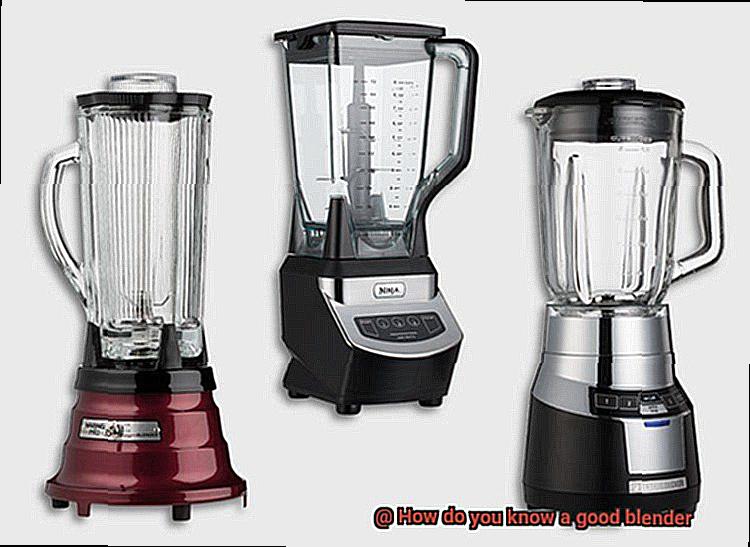
When it comes to blending, the motor power of a blender is the heart and soul of the machine. It is what drives the blades and determines how well the blender can handle different types of ingredients. If you want a blender that can whip up everything from smoothies to nut butter, it’s essential to consider the motor power.
Blenders typically range from 300 to 1500 watts, with higher wattage translating to better performance. A high-powered motor can easily handle tough ingredients like ice, nuts, and frozen fruits. However, it’s important to note that a high wattage also means a higher price tag.
While motor power is critical, it’s not the only factor to consider when choosing a blender. You should also think about blade design, jar capacity, and speed settings. Different blenders are designed for various purposes, so you’ll want to choose one that fits your needs.
If you only plan on using your blender for simple tasks like making smoothies occasionally, a lower wattage may suffice. However, if you plan on using your blender frequently and for more demanding tasks like crushing ice or making nut butter, it’s worth investing in a more powerful motor.
Blade Quality
The blades are the unsung heroes of the blending process, responsible for breaking down ingredients and ensuring a smooth blend. With so many options on the market, it can be challenging to determine which blender has the best blades. But fear not. Let’s dive into the factors that make up exceptional blade quality.
First and foremost, the material of the blades is crucial. Stainless steel is the most commonly used material in blender blades due to its durability and resistance to rust and corrosion. However, high-end blenders may use titanium or diamond-coated blades for even greater longevity. These materials ensure that your blades won’t dull or rust quickly, allowing you to blend anything from ice to frozen fruits with ease.
Next up is the shape and design of the blades. A good blender should have sharp and sturdy blades that create a powerful vortex, pulling ingredients towards the bottom of the blender for even blending. Some blenders have specially designed blades that can create different textures or consistencies, such as smoothies or purees. Look for a blender with blades that suit your blending needs.
Additionally, consider the number of blades and their placement in the blender. While more blades can help create a smoother blend with fewer chunks, they also increase the risk of getting stuck or jammed if not designed properly. For example, some blenders have four blades placed at different heights to ensure proper blending.
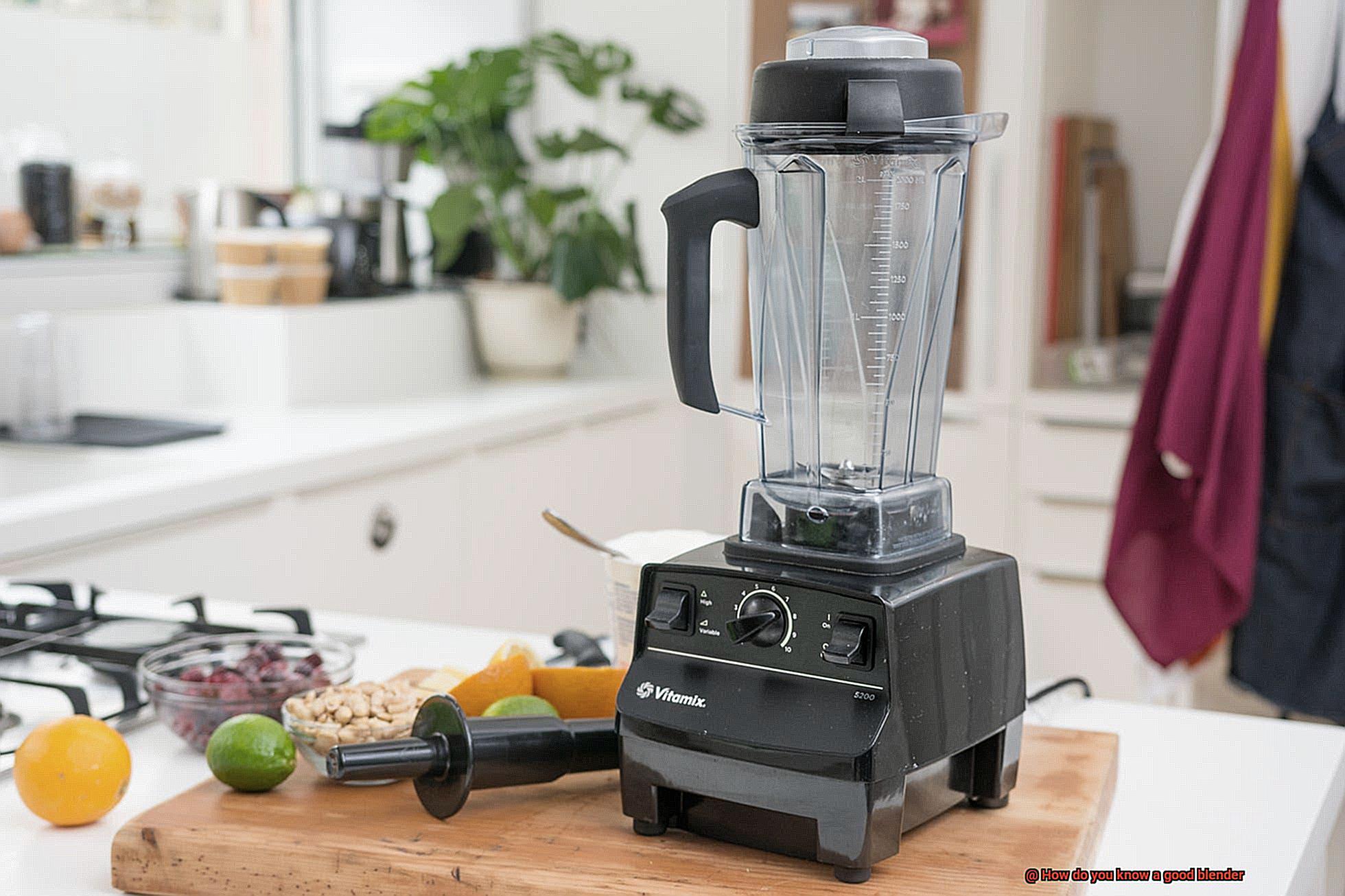
Lastly, easy cleaning is key when it comes to blade quality. Look for blenders with removable blades for effortless cleaning. Blades that cannot be removed can be difficult to clean thoroughly and can harbor bacteria and other contaminants over time. A good blender should come with a tool or instructions for safely removing and cleaning the blades.
Capacity
Well, one of the most critical factors to consider is its capacity. The capacity of a blender refers to the amount of ingredients it can hold and blend at once. It’s measured in liters or cups and is determined by the size of the blender jar.
Finding the right blender capacity depends on your needs. If you plan on making smoothies for yourself, a smaller blender with a capacity of 1-2 cups might suffice. However, if you want to make larger batches of soups or smoothies for a family or group of friends, then you should consider a blender with a larger capacity, such as 6-8 cups.
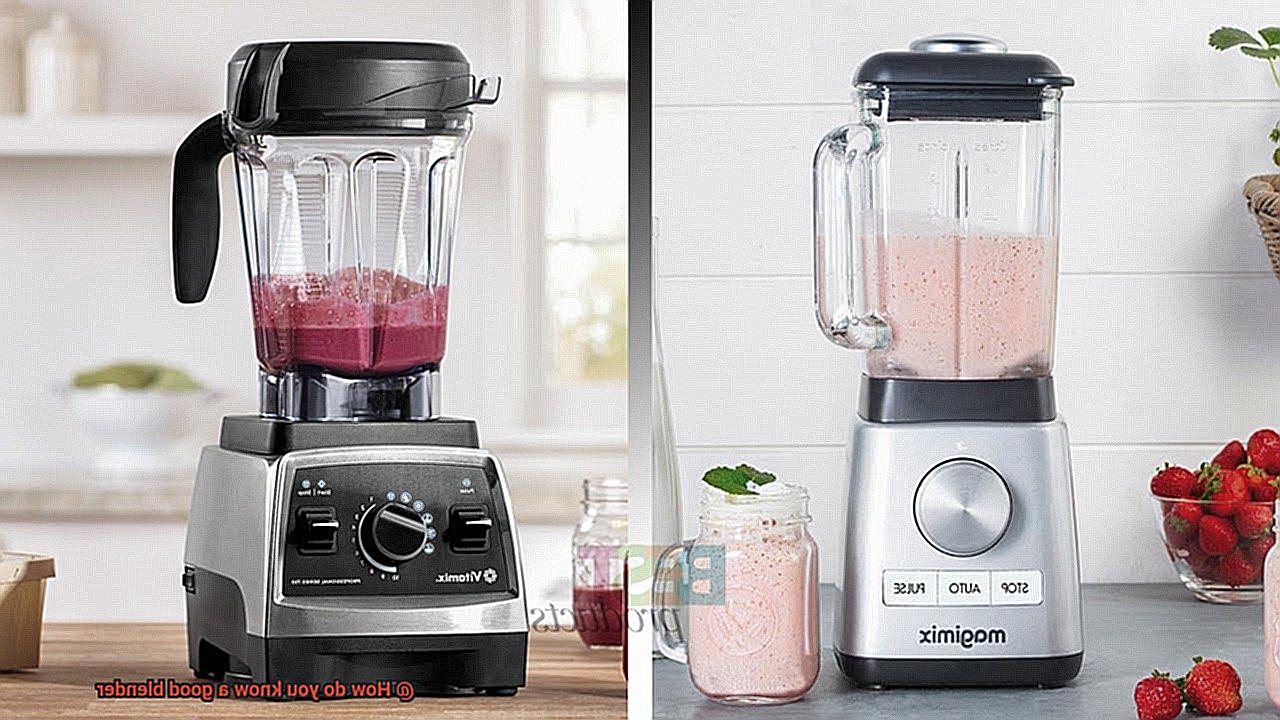
It’s important to note that the blender’s capacity can impact its performance. A blender with a larger capacity may require more power to blend ingredients effectively. Therefore, it’s crucial to choose a blender with a powerful motor that can handle the size and amount of ingredients you plan to blend.
The shape of the blender jar is another factor to consider when evaluating the blender’s capacity. Blenders with wider bases tend to be more stable and can blend larger quantities of ingredients more effectively than those with narrow bases and wider tops.
Pitcher Type
The pitcher is where all the ingredients are blended together, and it’s important to choose the right one that fits your needs. Let’s dive deeper into the two main types of blender pitchers: glass and plastic.
Glass pitchers are often preferred by those who prioritize durability and longevity. They’re sturdy and can withstand high temperatures, making them ideal for blending hot soups or sauces. Additionally, they’re easy to clean and won’t retain any odors or stains from previous blends. However, glass pitchers can be heavier and more fragile compared to plastic pitchers.
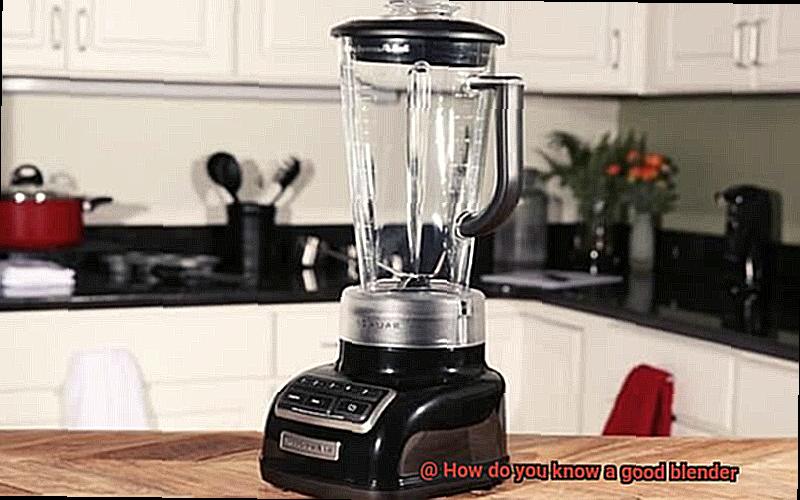
On the other hand, plastic pitchers are lightweight and less likely to break if dropped. They come in a variety of colors and designs, allowing for more customization options. They’re also less expensive than glass pitchers. However, they may get scratched over time and can retain stains and odors from previous blends. It’s essential to note that some plastic pitchers may contain harmful chemicals such as BPA, which can leach into your food and cause potential health risks. To avoid this issue, make sure to look for BPA-free labeled plastic pitchers.
When choosing a pitcher type, it’s also crucial to consider its size and shape. A larger pitcher can hold more ingredients, making it ideal for blending smoothies for multiple people at once. A narrow pitcher may be easier to pour from, while a wider one allows for easier cleaning access.
Brand and Price Point
If you’re in the market for a blender, the brand and price point are crucial factors to consider. As an expert in this field, I’ve done my research and have some insights that can help guide you in your decision-making process.
Firstly, let’s talk about brand. With so many options available, it’s important to choose a reliable brand that has a good reputation and positive customer feedback. Some of the top blender brands include Vitamix, Blendtec, Ninja, and KitchenAid. These brands have been in the market for a long time and have established themselves as reliable options for consumers. While they may come with a higher price tag, they often offer more features and better performance than their lower-priced counterparts.
However, not everyone has the budget for a high-end blender. That’s where budget-friendly brands like Oster, Hamilton Beach, and Black+Decker come in. These brands offer more affordable options without compromising on quality. While they may not have the same level of power or durability as the higher-end brands, they still offer good performance for everyday use.
When considering price point, it’s important to evaluate your needs and determine what features are essential for you before making a decision on how much to spend. Higher-priced blenders often come with more features and better performance, but they may not be necessary for everyone’s needs.
In addition to brand and price point, there are other factors to consider when choosing a blender. These include pitcher material, motor power, speed settings, and ease of cleaning. For example, if you plan on using your blender frequently or for heavy-duty tasks like crushing ice or blending tough ingredients, you’ll want to opt for a model with a powerful motor.
Considerations for Different Uses of Blenders
First things first, it’s important to assess the specific tasks you’ll be using the blender for. If smoothies are a staple in your diet, opt for a blender with a powerful motor and sharp blades that can blend even the toughest fruits and vegetables into a smooth consistency. Imagine sipping on a chunky smoothie – not so appetizing, right?
For those who plan on tackling more heavy-duty tasks like crushing ice or making nut butter, look for a blender with high wattage and durable blades that won’t overheat or break down under pressure. You don’t want to be left with a pile of broken blades and no nut butter to show for it.
But wait, there’s more. Some blenders come with specialized attachments or settings that can make them more versatile for different uses. Need to chop vegetables or blend soups? Look for a blender with a food processor attachment. Want to make frozen drinks or puree baby food? Look for specific settings on your blender.
Tips on Choosing the Right Blender for You
Choosing the right blender can be an overwhelming task, but fear not. We’ve compiled some tips to help you find the perfect blender for your specific needs.
First and foremost, consider what you’ll be using your blender for. Are you a smoothie enthusiast or do you plan on blending tougher ingredients like nuts and ice? This will help determine the power and features needed to get the job done efficiently.
Speaking of power, don’t overlook the wattage of the motor. Higher wattage blenders are generally more powerful and efficient, but they can also come with a higher price tag. If you’re only planning on using your blender for simple tasks, a lower wattage motor may suffice.
Capacity is another essential factor to consider when choosing a blender. Do you need a large container for making batches or just a smaller size for personal use? Make sure to choose a blender that has a container size that fits your needs.
In addition to capacity, speed settings are also important. Look for blenders that have multiple speed options so you can adjust the blade speed depending on what you’re blending. This will help ensure that your ingredients are blended to perfection every time.
Lastly, consider the ease of use and cleaning of the blender. Look for models with straightforward controls and removable parts that can be washed easily, either by hand or in a dishwasher.
Conclusion
In conclusion, a good blender is an indispensable tool that every kitchen should have. Its ability to blend, puree and crush ingredients with ease makes it a must-have for any cooking enthusiast. However, not all blenders are created equal and choosing the right one can be overwhelming.
When searching for a blender, motor power should be at the top of your list. A strong motor can handle tough ingredients like frozen fruits, nuts, and ice without breaking a sweat. Blade quality is equally important as it determines the smoothness of your blend. Stainless steel blades that create a powerful vortex are ideal for efficient blending.
Capacity is another crucial factor to consider when selecting a blender. The size of the container determines how much you can blend at once and should be based on your needs. Additionally, pitcher type should be considered based on durability, weight, and potential health risks.
Brand and price point are also essential considerations when selecting a blender. High-end brands such as Vitamix and Blendtec offer more features and better performance but come with a higher price tag. On the other hand, budget-friendly brands like Oster still provide excellent performance for everyday use.
Ultimately, finding the perfect blender depends on your specific needs and intended use.

